Caves are often thought to be places of mystery and secrecy, and Indian caves are no different. These caves are a treasure trove of culture and history – they are full of amazing archaeological specimens, colourful paintings, and more. Many caves of India are also geological wonders or home to wonderful legends. History buffs and those of you who enjoy exploring architecture will have a wonderful time visiting these ancient caves in India. Each has a unique story to tell and a wonderful world to get lost in. Visiting a cave also makes for the perfect day out, you get to spend some quality time with friends and family while soaking in some ancient history!
Every Indian state has a number of caves worth exploring, each with a unique mix of history, spirituality, and adventure. Some are even major religious destinations and heritage spots that date back to pre-historic times.
Here are 25 Famous Caves of India
1. Ajanta and Ellora – Maharashtra

Ajanta and Ellora are some of the most famous caves in India. They are carved into a hillside near the town of Jalgaon in Maharashtra. The 34 Buddhist, Hindu, and Jain caves at Ellora date back to the 6th and 11th centuries AD, and 29 Buddhist caves at Ajanta that date back to the 2nd century BC and 6th century AD. They are famous for their beautiful art and sculptures, of both deities and abstract designs.
2. Amarnath – Jammu & Kashmir

Amarnath cave in Jammu and Kashmir is located near Srinagar and is known for its shrine to the Hindu deity Shiva, which is said to be thousands of years old. It has an icy stalagmite that resembles the Shiva Linga. Surrounded by snowy mountains, it is situated at an altitude of 3,888 meters and is only open in the summer.
3. Badami – Karnataka

The small villages of Badami, Aihole, and Pattadakal (all on the banks of Malaprabha River) are known for intricately carved temples, caves, and forts, all made from sandstone. They were once a part of the Chalukya Dynasty, which ruled the area between the 6th and 12th centuries. Don’t miss the 18-armed dancing Shiva at the Badami Caves, and the beautiful waterside Bhutanatha Temples.
Also Read: A Travel Guide Of Amazing Places To See In Karnataka
4. Bagh Caves – Madhya Pradesh
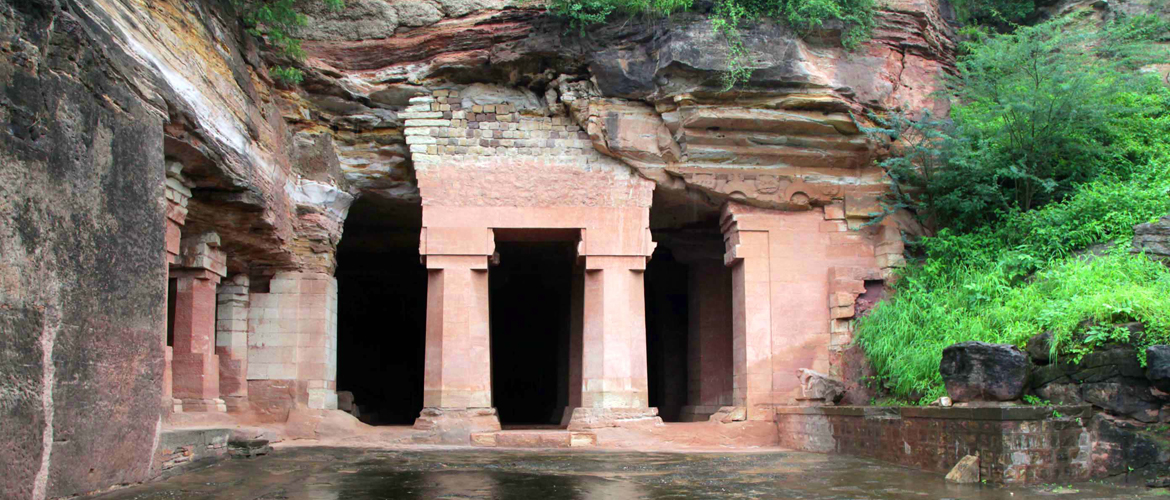
Located on the banks of the Baghani River in Madhya Pradesh, the Bagh Caves are a set of 9 sandstone rock-cut monuments that are known for their outstanding Buddhist mural paintings and carvings. They are said to date back to the 4th century AD.
5. Barabar Caves – Bihar
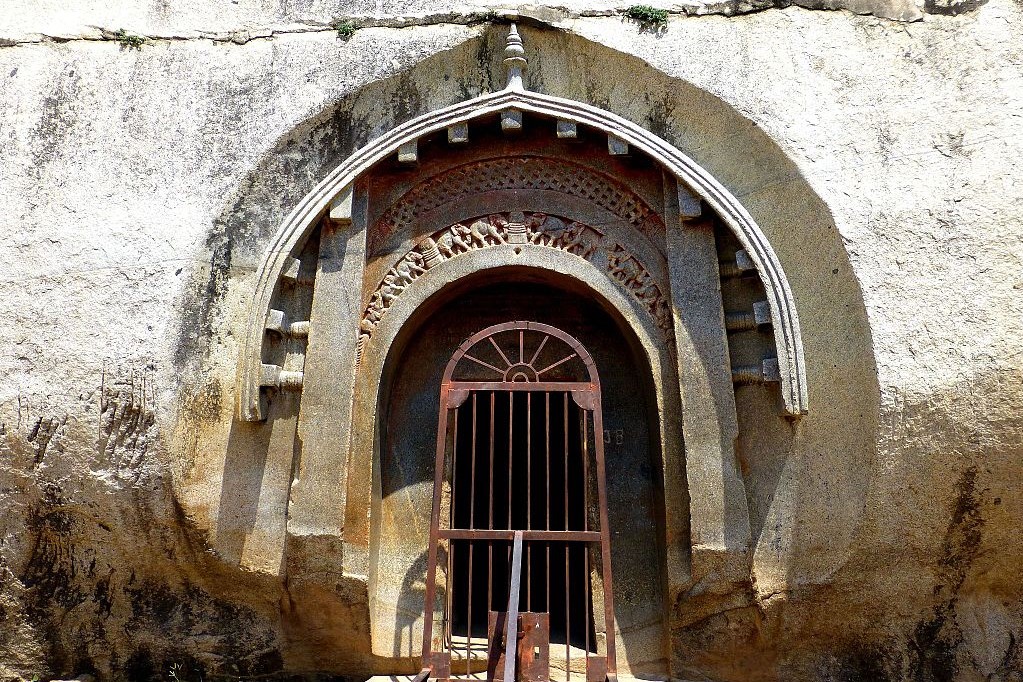
The Barabar Caves are said to be some of the oldest surviving rock-cut caves in India and date back to the Maurya Empire in the 3rd century BC. Located near Bodh Gaya, these caves were used by ascetics and are also full of Buddhist and Hindu sculptures and inscriptions from later periods.
6. Belum Caves – Kurnool, Andhra Pradesh

Located near Kurnool, Belum Caves are the second largest natural caves in the Indian subcontinent. At over 4km in length, the caves were formed due to the erosion of limestone by the Chitravati River. This stunning underground wonder was once home to Buddhist monks.
7. Bhimbetka Rock Shelters – Madhya Pradesh

These majestic caves are situated at the Ratapani Wildlife Sanctuary in Madhya Pradesh and are a UNESCO World Heritage Site. They are home to some of the earliest art and rock paintings and carvings in the world, which depict life in the Mesolithic Period. According to legends, the Pandavas from the Indian epic tale, the Mahabharata, are said to have sheltered here.
8. Borra Caves – Vishakapattanam, Andhra Pradesh

Located in the Ananthagiri Hills at Vishakapattanam, the Borra Caves are full of amazing limestone features. These include a naturally formed Shiva Lingam (as well as stalagmite and stalactite formations) that make it sacred to the tribes who live nearby.
9. Dungeshwari Cave Temples – Bihar
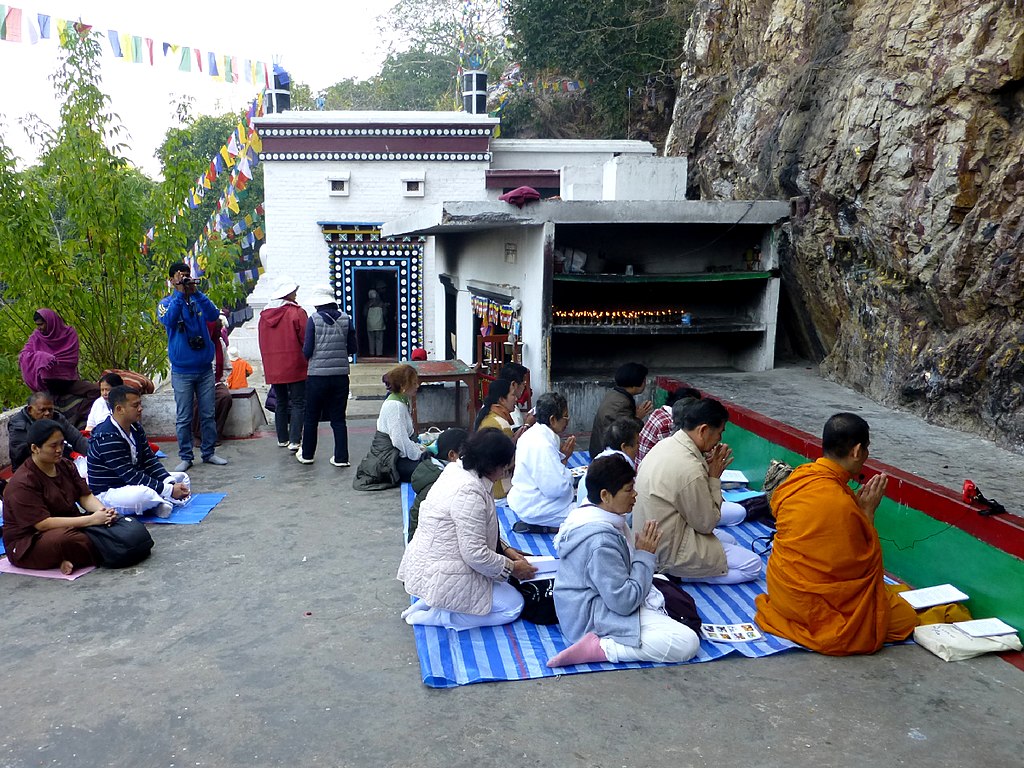
Near Bodh Gaya in Bihar are the famous Dungeshwari Caves. It is believed that the Buddha spent time meditating here before attaining enlightenment at Bodh Gaya. The caves house many Buddha statues, as well as an idol of Hindu goddess Dungeshwari, and are a popular tourist hub.
Also Read: A Travel Guide of Wonderful Places to Visit in Bihar
10.Eddakkal – Wayanad, Kerala

These natural caves in the Wayanad district of Kerala lie in the Western Ghats. They were once part of an ancient trade route connecting the mountains of Mysore to the Malabar Coast. Inside, the caves are full of paintings and carvings, which are said to date to at least 6,000 BC.
11. Elephanta – Mumbai, Maharashtra

The historic Elephanta Caves are located a short ferry ride from the Gateway of India in Mumbai. This group of Hindu and Buddhist cave temples dates back to the 5th century. While some of the structures may be in ruins, the amazing sculptures on this picturesque island is still a major tourist draw. Don’t miss the majestic three-headed statue of the deity Shiva.
12. Gavi Gangadhareshwara Cave Temple – Bangalore, Karnataka

This cave temple in old south Bangalore is an architectural marvel. Built-in the 1500s by Kempe Gowda, it features traditional rock-cut temple architecture. Set in a natural cave, it is dedicated to the god Shiva, and during the Makar Sankranti festival in mid-January, the rays of the sun fall perfectly between the horns of the stone bull outside the temple, illuminating the idol within.
13. Karla Caves – Lonavala, Maharashtra

Lonavla is located close to Mumbai and is a popular hill station. Many caves are located nearby, but one of the most well-known is the Karla Caves. Dating back to 200 BC, they are one of the oldest Buddhist temples in the country and contain stunning arched ceilings and rock-cut architecture that are said to resemble wood carvings.
14. Khambhalida Caves – Rajkot, Gujarat
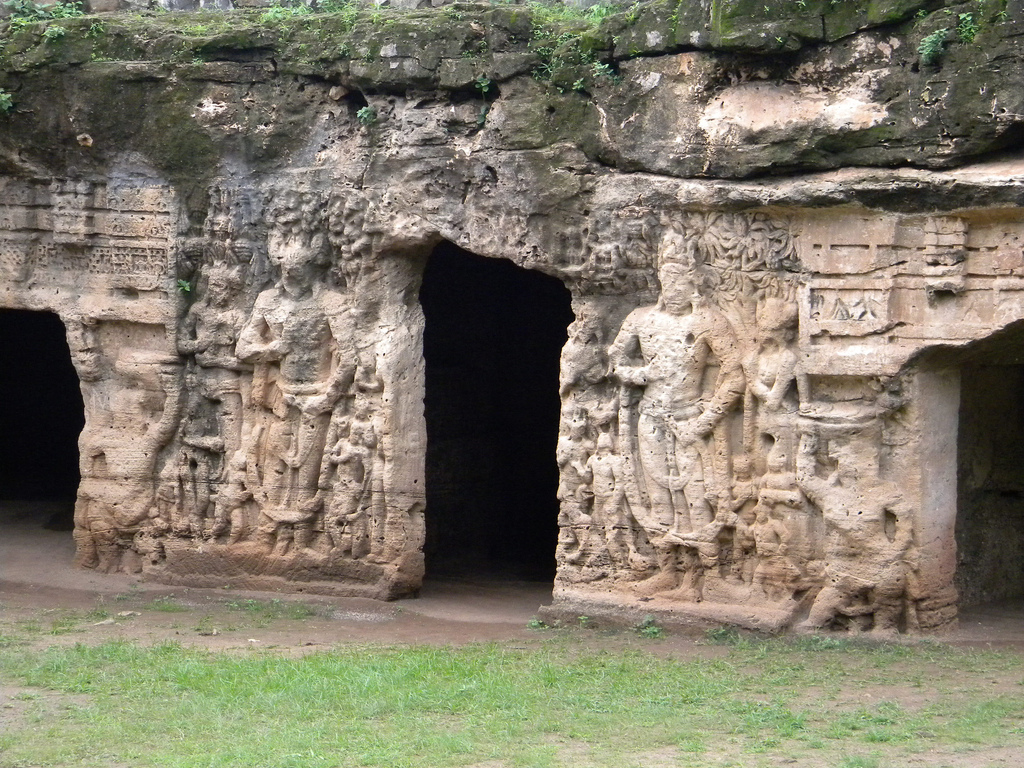
These amazing Buddhist caves were discovered in 1958 by P. P. Pandya, a prominent archaeologist. Carved out of limestone, these caves feature various sculptures of the Bodhisattvas, along with various other amazing rock carvings that are said to date to the 4th or 5th century AD.
15.Kottukal Cave Temple – Kollam, Kerala
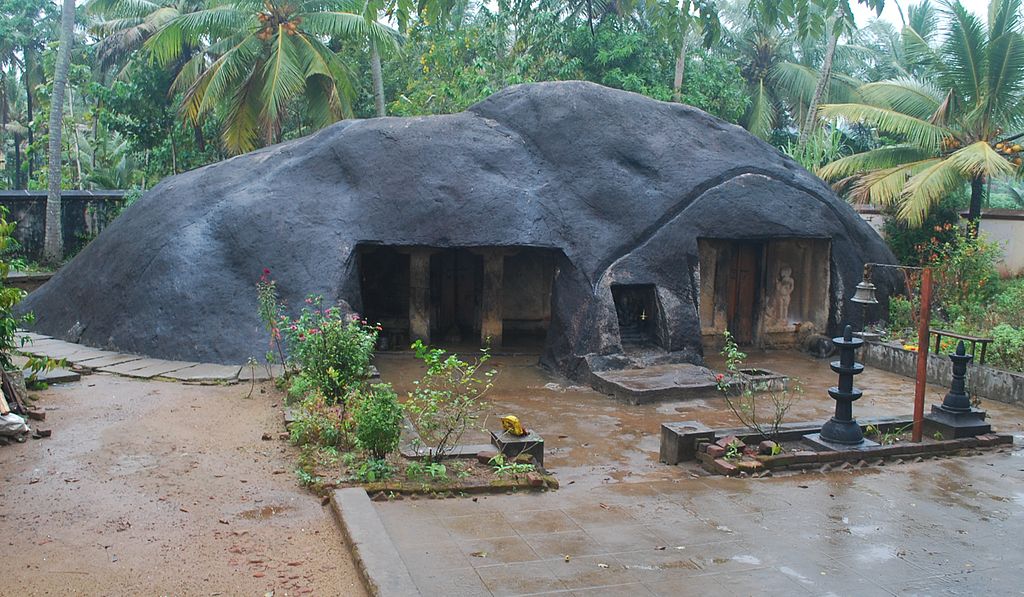
The Kottukal Cave Temple located in the Kollam District of Kerala dates back to the 7th century AD. The temple is carved out of a massive rock lying in the middle of a paddy field and its shrine is filled with idols of numerous Hindu deities.
Also Read: An Exciting Travel Guide of Beautiful Places to Visit in Kerala
16.Krem Mawmluh – Meghalaya
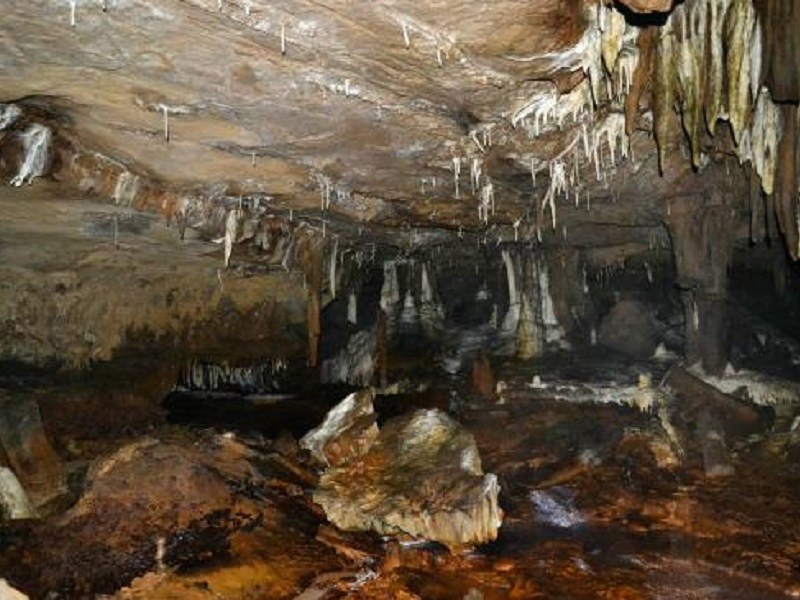
In this ancient natural cave in Meghalaya, the stalactites and stalagmites form majestic solid columns. Though getting there can be quite a challenge, once you get there you can also explore the many pools of water full of glow-in-the-dark shrimp.
17. Mahakali Caves – Mumbai, Maharashtra
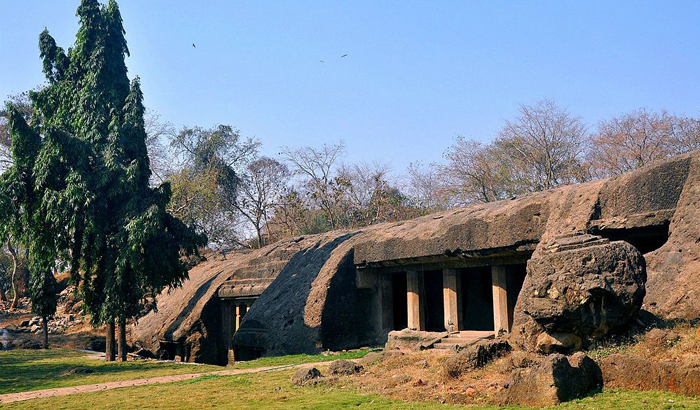
The Mahakali Caves, also known as the Kondivite Caves, are located in the suburb of Andheri in Mumbai. These 19 rock-cut caves of basalt rock date back to the 1st century BC and 6th century AD and feature various cells for monks as well as depictions of the Buddha and figures from Buddhist mythology.
18. Mawsmai Cave – Meghalaya

Located in Cherrapunjee, Meghalaya, the Mawsmai Caves are natural limestone caves full of amazing stalactite and stalagmite formations. While some entrances may be narrow, forcing visitors to crawl instead of walk, they are worth the effort. Don’t miss the massive Nohsngithiang Falls nearby.
Also Read: Meghalaya: Travel Guide to The Land in the Clouds
19. Pandavleni Caves – Nasik, Maharashtra
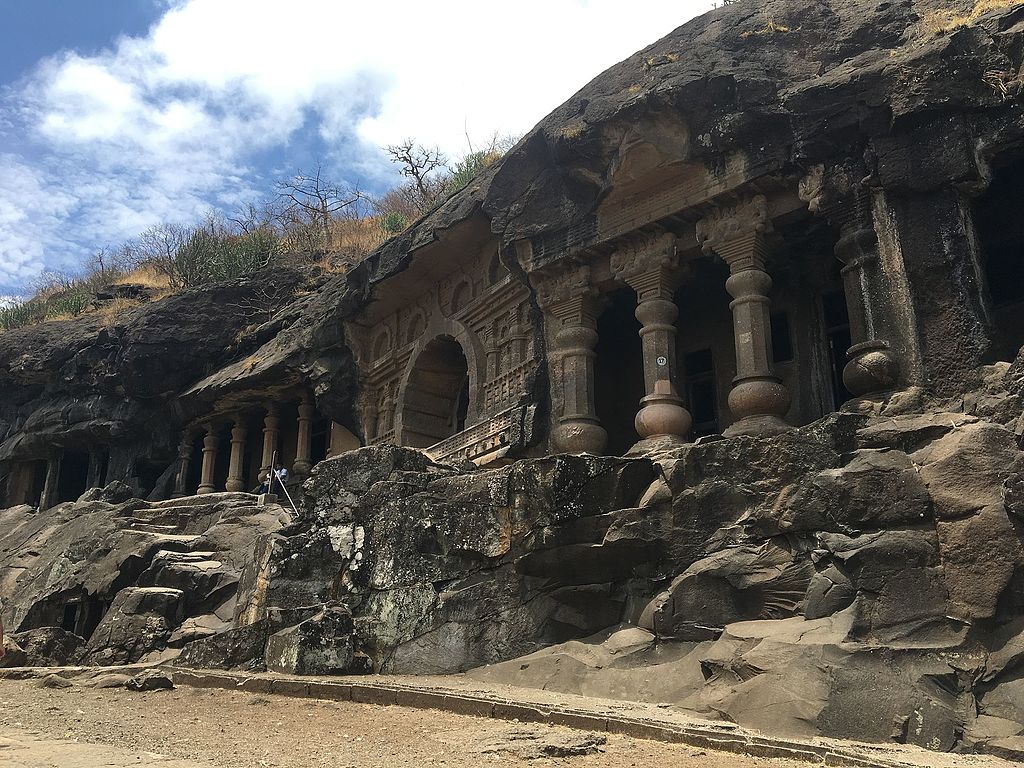
Also called the Nasik Caves, these 24 Buddhist caves were carved between the 1st century BC and the 3rd century AD and feature elaborate pillars, columns, and carvings. The caves are also a holy site for Buddhists and have many images of Buddha, and Bodhisattva, as well as beautiful Indo – Greek sculptures.
20. Patal Bhuvaneshwar – Uttarakhand
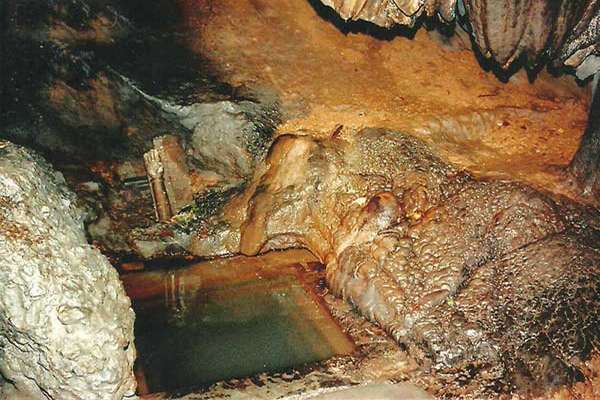
Situated in the Bhubneshwar village in Uttarakhand, these caves are said to have been found by King Rituparna. The caves have four major doors, Randwar, Paapdwar, Dharamdwar, and Mokshadwar, though only two remain open today.
21.Sittanavasal Caves – Pudukottai, Tamil Nadu

This complex of caves dates back to the 2nd century and was created as a Jain temple and monastery. They contain amazing frescoes and murals painted by amazingly talented Pallava craftsmen, as well as many carvings of mythical figures.
22. Tabo Cave – Himachal Pradesh

Located near the picturesque Tabo Village in the Spiti Valley, these caves are said to have been a place of meditation for Buddhist monks. The caves are dotted with colourful prayer flags and offer amazing views of the surrounding mountains.
Also read: A detailed itinerary to explore Spiti
23. Udayagiri and Khandagiri Caves – Orissa
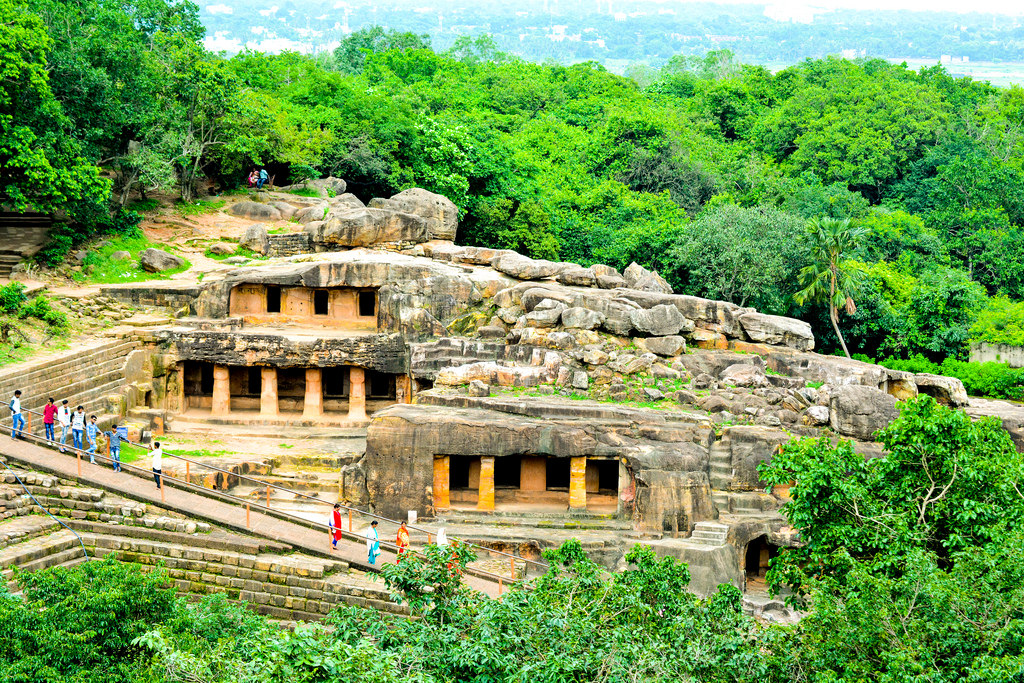
The Udayagiri and Khandagiri Caves are located just outside Bhubaneswar in Orissa and were once used by Jain ascetics. The Udaygiri Caves are located on Sunrise Hill and are known for the Tiger Cave, which has an entrance shaped like a tiger’s mouth, and the Queen’s Palace Cave, as well as intricately carved sculptures and Jain symbols. You can find more rock-cut shelters at the Khandagiri Caves, the most well-known of which is the Ananta Cave.
Also Read: A Thrilling Travel Guide of Places to Visit in Orissa
24. Undavalli and Mogalarajapuram – Vijayawada, Andhra Pradesh

Near the city of Vijayawada on the banks of the Krishna River lie the 7th-century Undavalli Caves. They are said to have been built by the Vishnukundin Kings and are carved out of sandstone. The caves are dedicated to the Hindu deities Anantapadmanabha Swamy and Narasimha Swamy. Nearby lie the Mogalarajapuram Caves which also feature amazing sculptures.
25. Varaha Cave Temple – Mahabalipuram, Tamil Nadu

The Varaha Cave Temple in Mahabalipuram is a UNESCO World Heritage Site. Dating back to the 7th century, it was constructed under the reign of the Pallavas and is carved out of solid granite. There are amazing carved panels featuring scenes from Hindu mythology. The most well-known is one that depicts the boar Varaha, an incarnation of the Hindu deity Vishnu, lifting the Earth out of the ocean.
So here was our list of 25 amazing caves of India, but there are many more to explore. Are there any of your favourites that we’ve missed? If so share them in the comments below.


